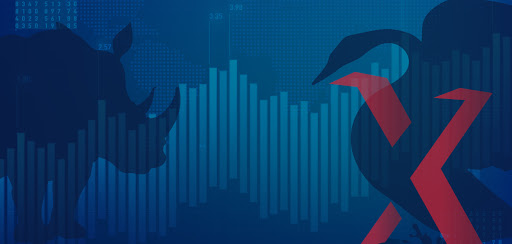Central Banks are rightly credited with stabilizing bond markets earlier this year in large part through unprecedented amounts of liquidity creation. Compared to the Global Financial Crisis, this time we saw much lesser interest rate cuts but significantly more balance sheet expansion.
It is important to note that a Central Bank Balance sheet is not necessarily a good proxy for the stimulus provided to the economy. Different Central Banks are purchasing hugely different maturities and hence not extracting the same amount of duration. Most Fed purchases have been at the front end of the curve (60% is <5y maturities), so those purchases are worth about half that in 10y equivalent duration terms. This point is especially important to track as markets expect the Fed to do some ‘Yield Curve Control’ going forward given the recent rise in far-end rates which can give rise to yield curve steepening.
Active Central Bank asset purchase programs have ensured that financial conditions have tightened much less than during the Global Financial Crisis. Credit stress has been contained. This has prevented Bankruptcies and widening of credit spreads.
We expect unwind of Central Bank support to be slow and gradual particularly for the Fed and ECB. Central Banks would want to prepare markets much in advance to avoid a repeat of 2013 Taper tantrums.
Inflation – Potential fly in the ointment?
Most market participants are convinced that the world will still have large spare economic capacity i.e., a negative output gap in 2021 which rules out Inflation as a near term headwind especially in the developed markets of US, Euro zone, UK, and Japan.
However, the conviction on the inflation outlook looking beyond 2021 is significantly lower. Inflation surge as early as 2022 could be the top risk facing the world economy and forward-looking financial markets especially when everyone is complacent about it. The biggest factor which has the potential of driving Inflation is the turning of the Commodities Cycle
Markets may start pricing in the Inflation risk later sometime in the second half of 2021.

Bidden Era: Aggressive Fiscal Support but under burden of higher taxes and regulations
- Democrats have historically given good global growth and a conducive environment for global trade i.e., less sanctions and tariff wars.
- Even though it is unlikely to be executed in the early days of Biden’s presidency, raising tax on corporations and wealthy people, strengthening corporate regulations are potential risks.
- Depreciation of dollar is a major theme under the current regime especially if taxes are increased and the DM to EM trade picks pace, though this weakness is expected to be largely front-ended and a significant chunk of that has already played out.
Unemployment: More to it than what meets the eye
Headline statistics such as unemployment are generally good summary measures of an economy’s health, but they mask how divided economies have become. Dig deeper and the K-shape becomes all too apparent. What the headline conceals is the bottom one- third of jobs in industries crippled by Covid-19 – including hospitality, tourism, and retail – which are still down a whopping 13.6%, or 7.1mn jobs lost, even with massive fiscal stimulus targeted at this group.
While the numbers above focus on the US job market, this great unevenness – and fragility – is pervasive around the world. Moreover, the number of jobs lost does not give the full picture, as many of those lucky enough to have jobs in vulnerable industries work fewer hours than before, and consequently have less take-home pay.





